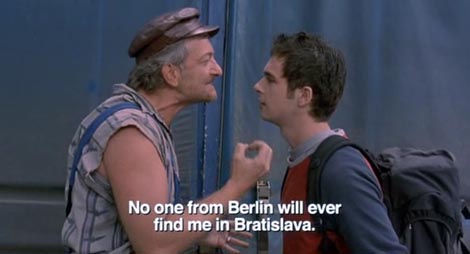Sighişoara is small Romanian town of about 35000 people nestled in among the hills of Transylvania. It features a typical European castle-on-a-hill overlooking the town. Sighişoara’s is notable for being the birthplace of Vlad Ţepeş, otherwise known as Vlad the Impaler. Vlad’s house has since been converted into an overpriced restaurant where tourists can enjoy a steak (cooked rare, of course). A clock tower from the 17th century stands next to Vlad’s birthhouse. Unfortunately, the clock was not operation when we were there, but climbing the tower provides a great vantage point. At the top of the tower, the railings – on which is marked the reassuring words, “Do not lean” – have little plaques stuck on them noting the distance and direction of major world cities. Sydney is the most distant at over 15,000 kilometres. Down near the base of the tower is a piaţa where they used to, among other things, hold public executions. Today, it is filled with a variety of souvenir stalls selling everything from Romanian handicrafts to ultra-tacky Dracula memorabilia.
Sighişoara is not heavily touristed and although that made for a peaceful day, it seemed like most of the inhabitants had never seen an Asian before. I was stared at by a Roma boy all through lunch, which was quite disconcerting. Of course, the staring was mutual at times – especially when a bunch of Gypsies in a horse-drawn buggy went by on the highway (the horse conveniently defecating all over the road as it trotted past). However, later in the day, I passed by a bunch of youths who started making mocking Chinese-sounds – something I haven’t experienced in many years.
The next day, the weather had turned cold and overcast. We hopped on the train to Bucharest. At first, it was only wheat fields and hills – layered in different shades of grey by haze and distance. Poor light gave everything a moody, muted colour. As we moved out of Transylvania and closer to Bucharest, things got depressing. Agriculture and countryside slowly gave way to industry, and great rusted, stained hulks of factories and abandoned vehicles lined the railway side. Cottages were replaced by monolithic, dirty and overwhelmingly grey apartment blocks. When we finally rolled into Bucharest, the rain clouds had rolled in as well.
The rain was here to stay. It rained for four days straight, so heavily on the first two days that we were mainly stuck indoors. By the third day, the rains had resulted in some minor flooding around Bucharest, but were beginning to ease up and we headed into the city.
Grey, drab, and dreary, Bucharest really felt like the Eastern Europe of old. Bucharest felt like it was still mired in the past. Boulevardes link a series of piaţas through the city, but unlike the piazzas of Italy, most of them are voluminous cobblestoned areas which would be empty if the Romanians weren’t using them as ad hoc car parks.
Bucharest is not a city frequented by tourists, lacking information booths, English signs and any central tourist attractions. All the sights we saw were conspicuously devoid of tourists, including a decent replica of Paris’ Arc de Triomphe, called the Arcul de Triumf in Romanian (a lot better than the ugly four-sided replica in Vientiane, at any rate). We only visited one museum – the large Taranului Roman Museum which was mostly filled with unremarkable wooden artifacts, glass paintings, stone crosses and embroidered clothing. Overall, the feel was quite depressing, though the city was certainly interesting.
Romania only recently emerged from the shadow of a communist dictator’s rule in 1989. During the reign of Nicolae Ceauşescu, Romania was afflicted with economic turmoil, famine, torture and forced relocation as thousands of villages were uprooted in a program of rural urbanisation. Also during this time, Ceauşescu tore up the churches and booted some 70,000 citizens off their properties in order to use the land for his own dubious and ultimately failed land development projects. His incongruously named “House of the People” (now the Palace of Parliament) is one of the largest buildings in Europe, but it is a mammoth concrete monstrosity. Although impressive in size, it is devoid of any colour whatsoever. It stands on a stark piece of land with ill-kept gardens and next to parkland which is overgrown with weeds and polluted by rubbish. Bordering the park and palace is the B-dul Unirii. An entire suburb was destroyed in order to make way for what was intended to be Bucharest’s Champs Elysées. Ceauşescu even went so far as to make his boulevarde six metres longer than its Parisian counterpart, but his vision never really took fruition and B-dul Unirii is now aptly described as an “urban wasteland” by the Lonely Planet.
Ceauşescu was finally executed after an uprising in 1989. In the Piaţa Revoluţiei you can see the balcony where he made his final address to a hostile crowd. When you see how close the balcony is to street level, it becomes clearer why he left the building in a hurry via an airlift from the roof. The piaţa now has a memorial dedicated to those involved in the 1989 Revolution. Wikipedia has a good account of the Revolution.
Bucharest is really quite bleak by any city’s standards and compared to the Romanian countryside. It was not until several days later on the train that we got to talk with a local and confirm that Bucharest really was bleak and it wasn’t just because we weren’t visiting the right places.
The other thing about Romania is the high population of Roma, an ethnic minority facing much discrimination in the region. Roma are better known for being associated with the term “Gypsy”. Gypsies are much maligned all through Europe. In a store in Prague, I noticed that Cheryl’s backpack was not zipped up properly, and the shopkeeper did not hesitate to point out that “maybe the gypsies opened it up”. Officially the Roma population in Romania is about 400,000 out of the country’s 20 million, but it is reckoned that actual numbers are closer to 2 million. Romania certainly had a lot of them. In Bucharest, I had ducked into a bookstore and bought some postcards. As I was putting them in my bag, I noticed a group of gypsy boys staring at me intently through the window. I got spooked and decided to stick around the store for a little while longer. Half an hour later, they appeared to have left, but when I walked out, they suddenly emerged from behind a bunch of pillars. There is little that is more traumatising than a group of four gypsy children surrounding you and demanding money, hands roving all over the place. Luckily, my backpack was locked, so I shoved my hands in my pockets, blindly ran onto the road and into oncoming traffic, and made my escape.
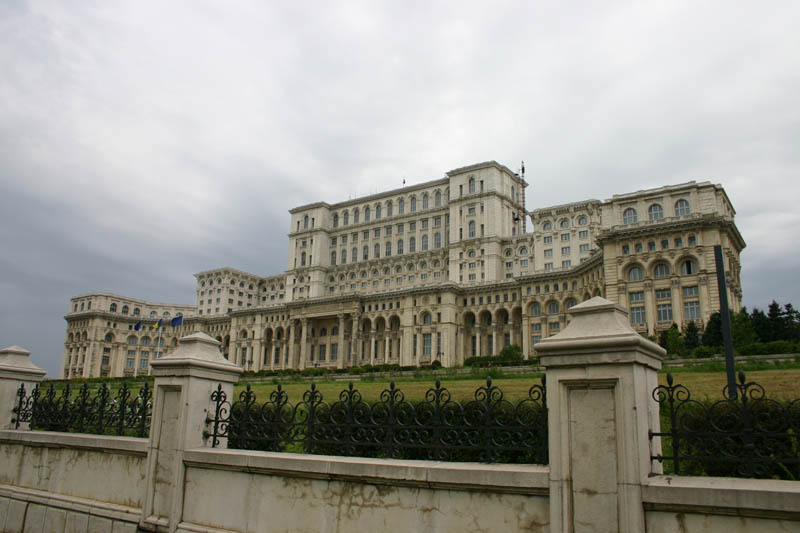
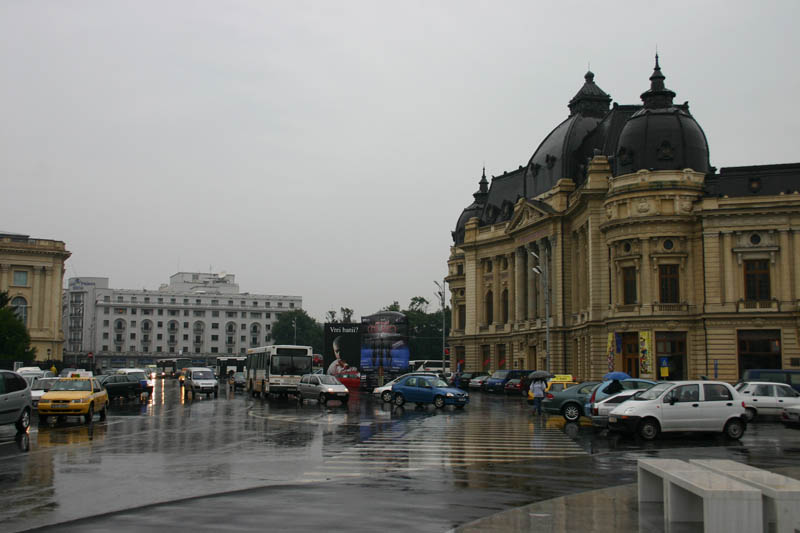
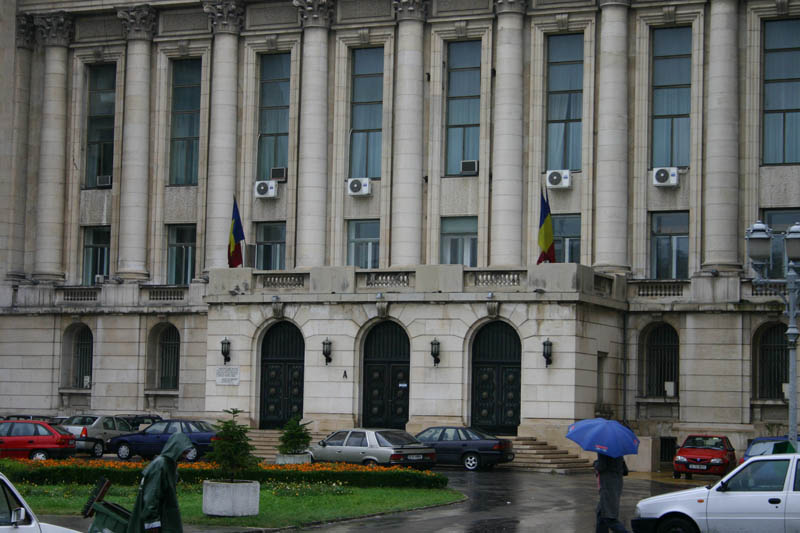
L: The monstrous Palace of Parliament
M: Piaţa Revoluţiei
R: Central Committee Balcony where Ceauşescu made his final speech
Train journeys can be a great way to travel and our path through Eastern Europe required several overnight journeys. As long as you have a reservation for a couchette or sleeper car, sleeping is normally not a problem. I find the rocking motion of the train quite soothing, actually. The only inconvenience is when you have to deal with border crossings. This involves a train stop in the middle of the night – once before reaching the border to get your passport stamped with an exit stamp, and once after crossing the border to get an entry visa. So, a typical scenario is getting woken up at 2.00am by one border guard, then later at 3.30am by the second. This can get quite annoying if something delays the process.
We visited Sofia after Bucharest. The trains we took into and out of Sofia were routes sufficiently obscure such that only backpackers seemed to frequent them. Going into Sofia we shared a compartment with Takeshi, a Japanese guy travelling solo (there seem to be a lot of solo Japanese travellers). A more unusual sight was a pair of girls from Hong Kong in the compartment next to us.
Bulgaria is probably at about the same level of economic development as Romania. However, not having gone through the same sort of turmoil Bucharest had gone through, Sofia is an attractive city. Many of its streets are paved with faded yellow cobblestones and in contrast to Bucharest, it has a large number of Orthodox churches scattered around the town. We also managed to see the changing of the guard, which features a ridiculous performance of goose-stepping, only outdone by the preposterous display the Greek soldiers put on in Athens. Although we were only in Sofia for one day, we quickly got a sense that Bulgarians were a warm and friendly bunch. In hindsight, it would probably have been better to spend more time in Sofia and less in Bucharest.
The Bulgarian language uses Cyrillic characters so the country felt very Russian (which is a little peculiar since it is almost like saying Hungary uses Roman characters so it felt very English). Interestingly, the Lonely Planet notes that Bulgarians nod to signal “no” and shake their heads to signal “yes”. Although this could produce some rather amusing opportunities for miscommunication, we never ran into any problems with this.
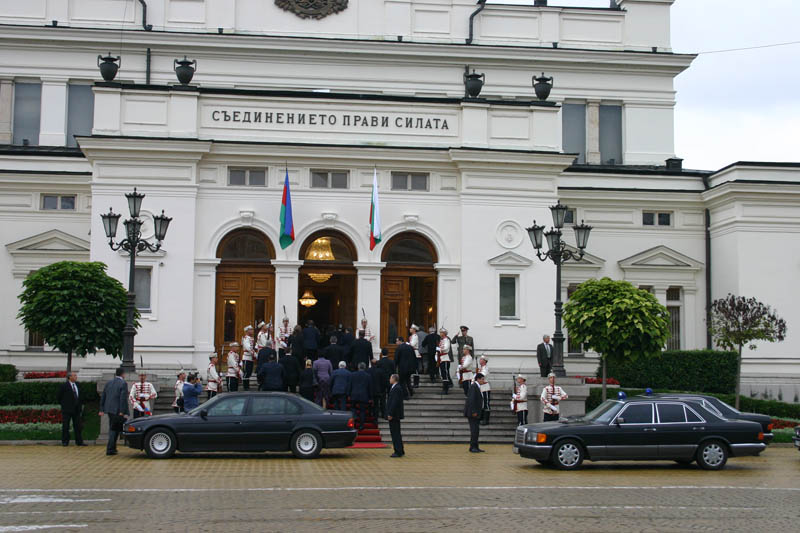

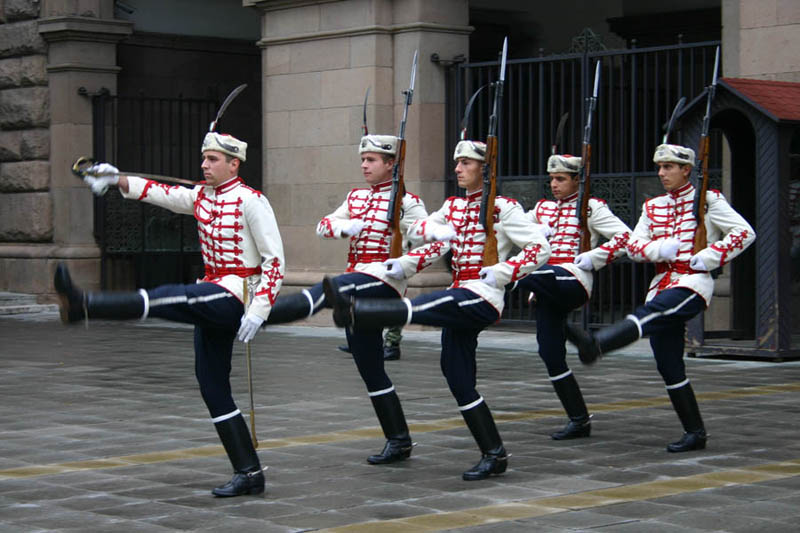
L: Foreign dignitaries arriving at the National Assembly
M: Alexander Nevski Church
R: Changing of the guard in Sofia
It was on the train from Sofia to Thessalonica that we met Ionut and his friend, whose name I won’t even attempt to spell. The two of them were both Romanian engineers who worked for Romanian Railways. As a perk of their jobs, they got to travel on the entire European train network for free. Utilising this deal, they had managed to visit a great deal of Europe – something which would not normally be feasible on a salary of about 300-400 Euro a month. To cut down on accommodation costs in Western Europe, they would arrive on an overnight train in the morning and leave on another overnight train in the night, taking a one-day whirlwind tour of a city.
Ionut’s English wasn’t very fluent and he had a habit of exclaiming something was “very fine” if it was to his liking. He wanted to visit Australia to see our crocodiles which were “very fine”, and our kangaroos, which were also “very fine”. However, on his salary – which was “not very fine” – getting to Australia just wasn’t possible.
On the other hand, Ionut’s friend, fed on a steady diet of movies on the TCM channel on pay TV, was fluent in English and very talkative. He was a great teller of anecdotes and jokes and seemed to have an endless supply of them, especially stories of his time in the Romanian army.
When we told him we’d recently been to Bucharest he immediately expressed his distaste. “I don’t like Bucharest. It’s very grey and boring. Ceauşescu destroyed everything. I come from the North, it’s much better up there.” He then told us another joke:
The Japanese built a car entirely out of gold and invited George H W Bush, Mikhail Gorbachev and Nicolae Ceauşescu to take a look at it. They came and had a look, but before they were allowed to leave, were searched by the Japanese police. Bush was searched first and when a gold screw was found in his pocket, he was summarily thrown in prison. Gorbachev was then found with a spark plug stuck down his pants, and he too was thrown into prison. Finally, Ceauşescu was frisked, but nothing was found and he was praised for his honesty. The next day Ceauşescu visited Bush and Gorbachev in prison.
“Why did they arrest you?” he asked them.
“I took a screw from the car as a souvenir,” Bush replied.
“And I took a spark plug,” Gorbachev said.
“Oh, fuck you!” Ceauşescu exclaimed. “No wonder why I couldn’t start the damn car!”
At around 3.00am we were woken up by the Bulgarian border guard. As we lay there bleary eyed, Ionut had in the meantime taken to pacing up and down the train carriage with a pack of cigarettes. He was nice enough to duck back in to let us know that he understood it was a non-smoking compartment, so that was why he was smoking outside. Unfortunately, while he was explaining this, he was waving his cigarette around, filling the compartment with a rather noxious smoke which lingered and made it very difficult to get back to sleep.
By 4.00am, the train still wasn’t moving. The border guard had discovered to their annoyance that someone in the next compartment didn’t have a Bulgarian visa in their passport. After a few tense moments of trying to figure out what to do, the unfortunate man was tossed off the train in the dead of night and we were off again.
One thing about travelling is how sudden changes of environment can be from one day and the next. By late that morning we had left behind the gloomy weather and foggy hills and emerged into bright sunshine, accompanied by the vivid Greek countryside with its stony cliffs, rolling plains and fields of olive trees, cotton plants and vineyards. We were back in the “West”.
Prague, Bratislava and Budapest are all old bastions of the Hapsburg empire. Each city has a hill overlooking the town and the Danube with a castle of some description sitting on the hilltop. So, that’s what I’ll start with in a brief roundup of each city.
The dominating feature of Prague Castle is St Vitus’ cathedral, a large cathedral with a impressive set of stained glass windows and chapels. We climbed the three hundred or so stairs to the top and were rewarded with a fantastic view of Prague and all its warmly coloured buildings and cobblestone footpaths. We caught the sunset on the famous Charles bridge at the bottom of the hill, a pedestrian-only bridge perpetually milling with tourists, portraiture artists and a variety of buskers. (Incidentally, the scene in the movie Eurotrip, where the group is sitting on the bridge in Amsterdam was actually filmed in Prague, very near the Charles Bridge.)
In the evening we listened to a performance of Mozart’s Eine kleine Nachtmusik and Vivaldi’s Quattro Staggioni by the Prague Chamber Strings at the National Museum at Wenceslas Square. A bit of a tourist trap, but a good recital nonetheless. Wenceslas Square is currently hosting a variety of contemporary art sculptures which are somewhat questionable in their artistic merit. Among the works of art were a model of Superman flying straight into a block of concrete (his head is actually embedded in it), an anatomically exaggerated abstract representation of the “relationship between men and women” (the man is actually balanced on his oversized appendage) and a row of men built out of metal and with balls of steel (literally).
The only disappointment about Prague was that the Astronomical Clock in the Old Town was under a three month long restoration when we visited. It was all covered up with scaffolding, but that didn’t stop a crowd from gathering under it and bitching about how unlucky they all were to have come at such an inopportune time.

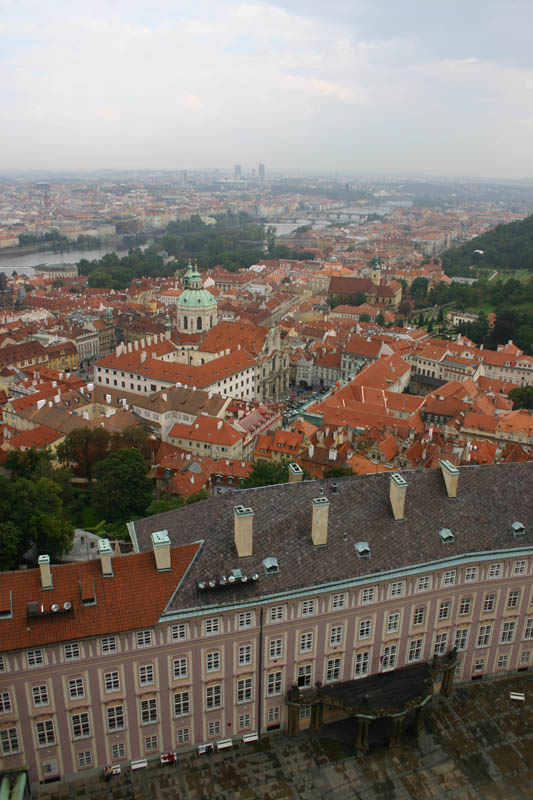
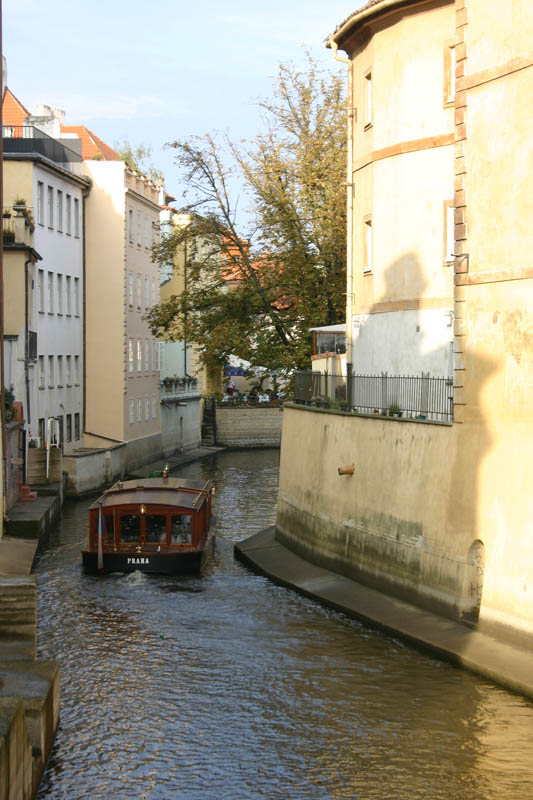
L: Cheryl and a guard at Prague Castle
M: View from St Vitus’ Cathedral
R: Near the Charles Bridge
Bratislava stands in contrast to Prague. Once part of Czechoslovakia, Slovakia peacefully became independent from the Czech Republic in 1993. Its capital, Bratislava, is the poorer cousin of Prague, being more compact and less visited. Bratislava Castle is a very plain building and seems to have been stripped bare and partially converted into offices. However, it does offer a picturesque view of the city. There is also a small museum in the castle which displays various objects found in the region from Roman times in nicely lit glass cases.
Bratislava’s city centre is a network of cosy pedestrian walkways, overflowing with cafes and restaurants and shares the same warmth of colours of Prague. Again, we had unfortunately visited during a period of heavy restoration – the town hall square had been uprooted, leaving an ugly hole and dysfunctional fountain in the middle of town.

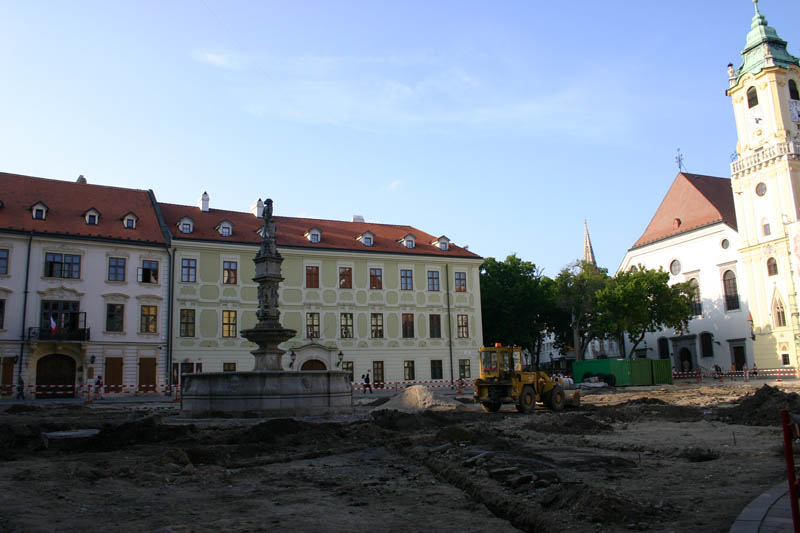
L: Bratislavan street
R: City centre
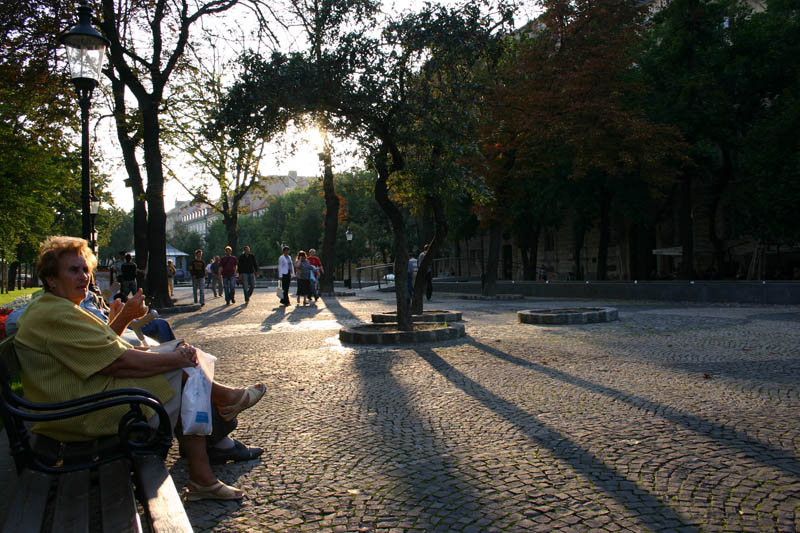
&p=2005travel/bratislava4.jpg)
L: Park
R: Bratislava Castle
Budapest’s castle is more like a small town. It contains a variety of museums, churches, hotels, restaurants, a palace and the Fisherman’s Bastion. The Fisherman’s Bastion is a distinctive structure built of white stone a hundred years ago. It overlooks the Danube and was used as a checkpoint on The Amazing Race (where Gus and Hera were eliminated, if memory serves).
Reminiscent of Prague, after visiting the castle we made our way down the hill on foot and crossed the Chain Bridge, one of the bridges connecting Buda and Pest – respectively the Western and Eastern halves of the city. Rumour has it that the Chain Bridge’s designer was so assured that his bridge was perfect, he had resolved to commit suicide if it was proven otherwise. After the bridge was opened, it was discovered that the lions standing on the bridge corners lacked tongues and consequently the creator took his own life. This rumour was summarily dismissed during a boat tour we took on the Danube at night, when all the major buildings are lit up with floodlights. The boat tour’s pre-recorded commentary offered a surprisingly frank overview of the city’s history, including an appraisal of the Marriott Hotel complaining that it was “too big, the angles are bad and it looks like a fortress”.
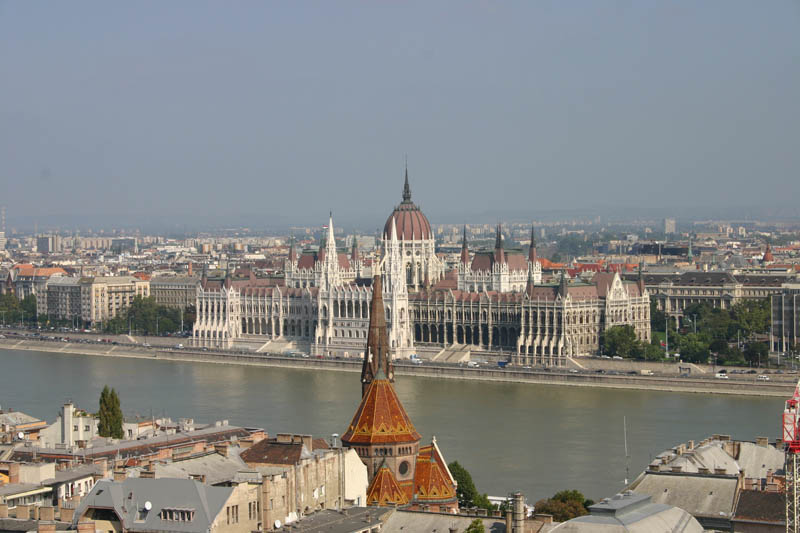
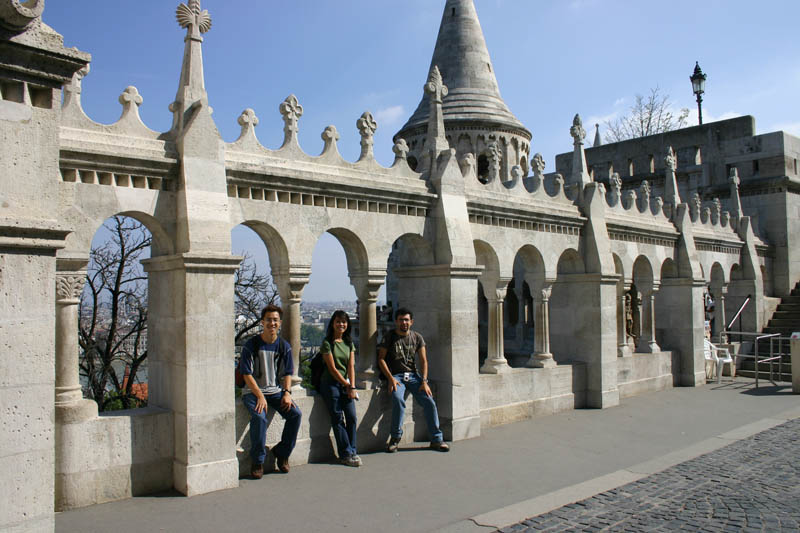
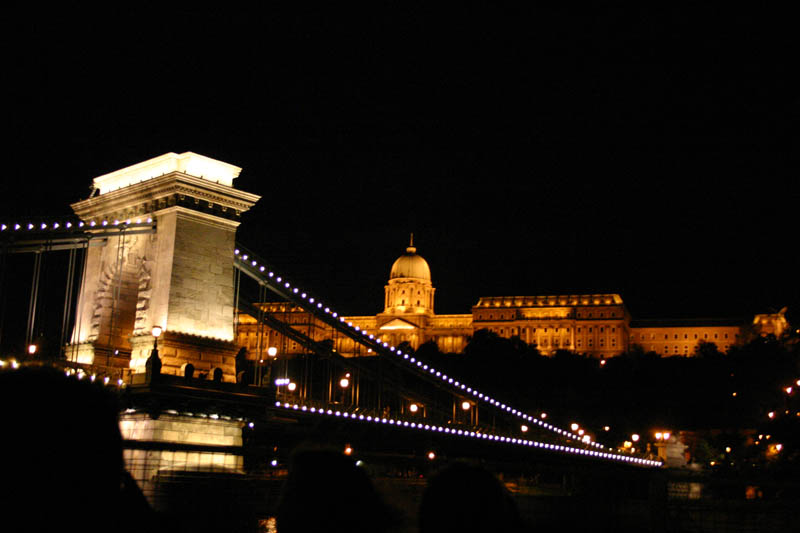
L: View over the Danube to Pest
M: Us at the Fisherman’s Bastion
R: Chain Bridge and Budapest Castle at night
Throughout these countries, the food was great. Hearty garlic and onion soups filled with melted cheese and served with a wide variety of fresh breads normally kick off meals. Main courses heavily focus on meat and gravy (with dumplings to mop up the sauce in Prague). Vegetables are normally ordered as side dishes because mains normally won’t come with them, maybe except for potatoes or sauerkraut. Beer is the standard drink during meals and is cheaper than soft drinks which come in ridiculously small quantities (200mL bottles!).
Interestingly, it is the custom to specify the weight of dishes on the menu. It is also customary to clear plates from the table as soon as possible, which means that you have barely taken your last bite when your dish is whisked out from under you.
From a travelling perspective, the three countries reminded me of Western Europe and all felt quite safe. Romania and Bulgaria proved to be an interesting counterpoint to the “Westernised vibe”…


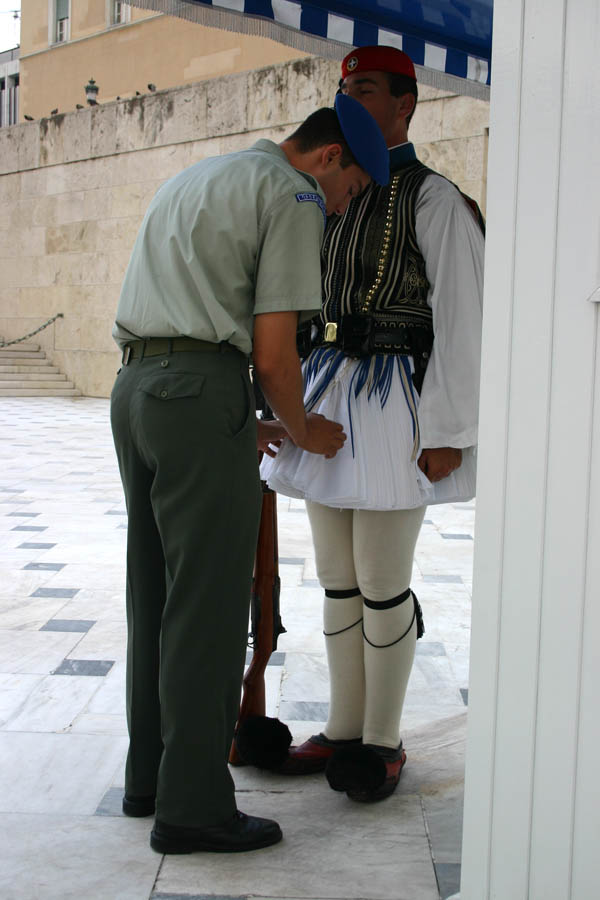
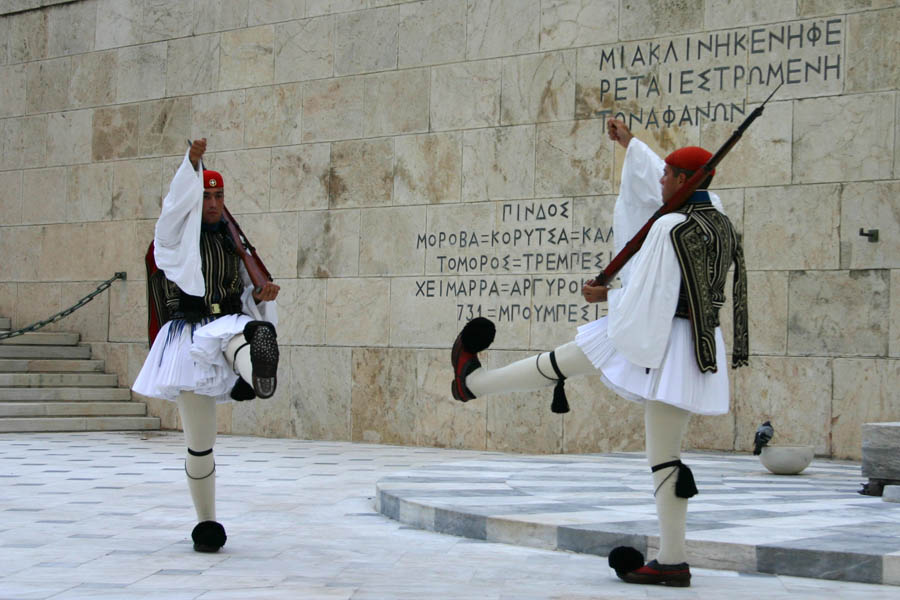












&p=2005travel/bratislava4.jpg)



